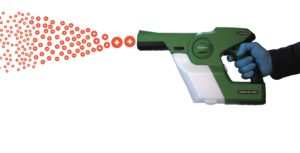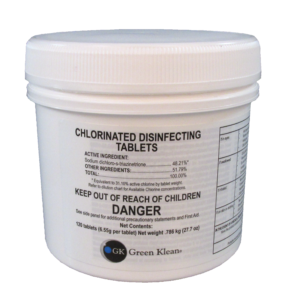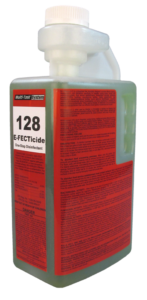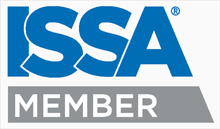Electrostatic Spray Application of Disinfectants in Healthcare
A New Tool For Healthcare to help prevent the spread of contagious illness and Healthcare Acquired Infections Illnesses which are Costly to Hospitals and Care Facilities:
Hospitals, nursing homes and other care facilities have made great strides in reducing the spread of infectious  illnesses and Healthcare Associated Infections (HAI’s). In the continued search to further bring down infection rates, electrostatic spray (E-Spray) application of disinfectants can be another effective infection control tool.
illnesses and Healthcare Associated Infections (HAI’s). In the continued search to further bring down infection rates, electrostatic spray (E-Spray) application of disinfectants can be another effective infection control tool.
Help slow the spread of contagious illnesses.
Even the best efforts at sanitation can fall short when surfaces that should be disinfected are complex in shape or are hard to reach. Furthermore, environmental services staff often have limited time to cover large areas where traditional spray and wiping methods take a substantial amount of time. Enter the electrostatic sprayer, a special type of sprayer that charges disinfectant spray droplets so they are attracted to surfaces similar to opposite poles of a magnet. A battery powered electrostatic sprayer can uniformly cover a lot of surface area rapidly and insure coverage of critical surfaces.
Electrostatic sprayers can use 65% less disinfectant solution, while achieving more uniform coverage of surfaces1.
Another tool in the Infection Control Toolbox.
Electrostatic sprayers are not a cure all for stopping the spread of infection. However, they can be a critical component of an overall infection control strategy as indicated below:
- Establish hand hygiene protocols for staff and patients.
- Have in place a monitoring program for hand hygiene compliance.
- Locate hand sanitizing stations when water is not available.
- Educate visitors on handwashing protocols.
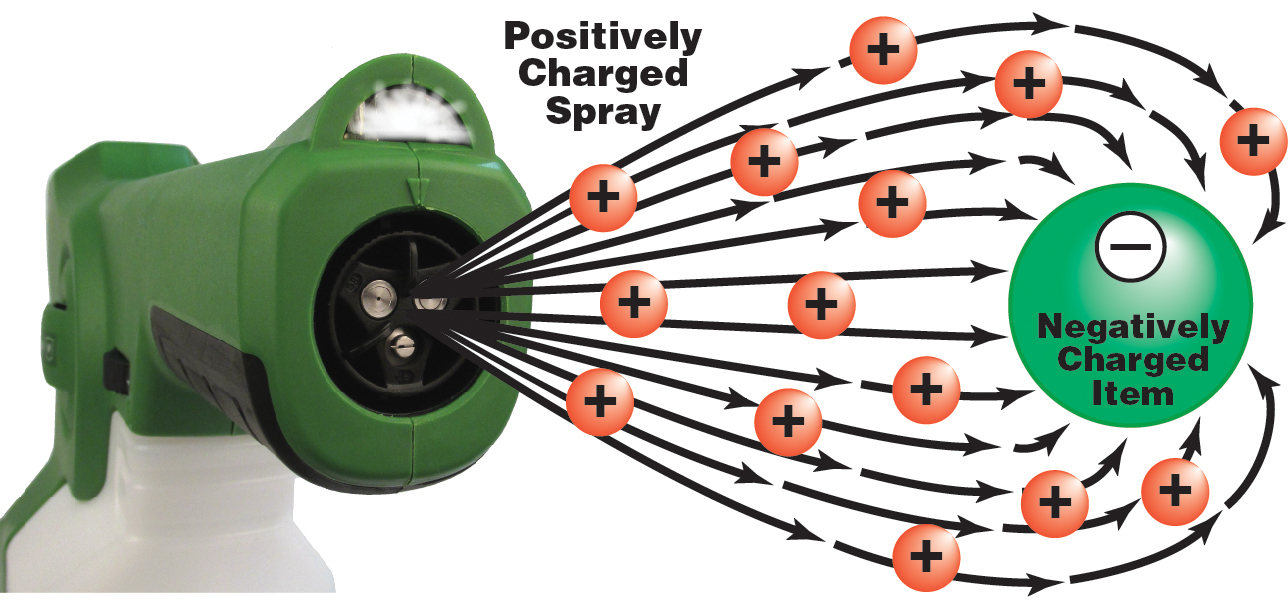
- Sick visitors should be encouraged to stay home.
- Implement a High Touch Surface Disinfecting Program.
- Regularly clean and disinfect surfaces.
- Add electrostatic application of disinfects in strategic areas.
Areas Electrostatic sprayers are used
Terminal Patient Room Cleaning
Patient Restroom Disinfecting
Patient Check in areas
Exam Rooms, labs, diagnostic testing areas
Public area disinfecting, lobbies, waiting rooms, chapels, etc.
Surgical Suites
Wheel chairs, beds, gurney’s and other transport equipment.
Rehabilitation equipment.
Ambulances and other patient transport vehicles.
Pathogens of Concern:
C-Diff: While there are many pathogens in healthcare, the one often found at the top of the list is Clostridium Difficile. While most pathogenic bacteria are transmitted when the bacteria is actively growing (vegetative), the C-Diff bacteria are spread through a dormant spore form.
C-Diff bacterial spores are much more resistant to conventional disinfectants, so only certain sporicidal disinfectants can be used to kill C-Diff. These are usually stronger and in some cases harsher chemicals. Examples include chlorine bleach, peroxy-acetic acid, and self dissolving chlorinated tablets.
Learn more about C-Diff and Disinfectants that kill C-Diff spores: Pathogen Primer; Clostridium Difficile
MRSA, VISA, VRE: Antibiotic resistant pathogens can cause infections that are difficult to treat and cause more severe illness and even death.
Candida Aurus: This fungal diseases is an emerging threat because it is difficult to treat and patients have a high mortality rate. The CDC recommends disinfecting rooms with isolated patients possibly affected by C. Aurus with a disinfectant with a claim for killing C-Diff spores.
About Electrostatic Spraying
While this is new technology to the cleaning industry, electrostatic spraying of liquids is widely used and in other industries.
Example #1: electrostatic paint spray systems charge paint particles so that they are attracted to surfaces to be coated. The benefit is uniformity of coverage, drastically reduced overspray, and complex shapes can be coated even if they are out of the line of sight.
Example #2: Farmers use electrostatic sprayers to protect their crops from insects and disease. Electrostatic spraying of pesticides on crops results in more uniform coverage and allows for less use of pesticide. Most importantly, the undersides of leaves that would be missed with ordinary spray systems get treated with electrostatic systems. Use 40-70% less liquid per square feet of coverage.
What makes electrostatic spraying different from other types of sprayers?
With conventional sprayers, the only surfaces that will be coated are those that are in the line of sight of the spray nozzle. Electrostatically applied liquids have a wrapping effect, so that complex objects and areas hidden from the line of site get coated with the liquid.
POWER SOURCE: The electrostatic sprayers require a power source to charge the liquid particles and propel them toward the target objects. There are electrostatic sprayers that use a cord to plug into 120V outlets, and those that use rechargeable lithium ion batteries.
Validation: Disinfectants and sanitizing products that make public health claims must be EPA registered. Manufacturing of such products must be in EPA licensed facilities that follow specific protocols.
It is important for disinfectants and sanitizers used with electrostatic sprayers are validated for these devices. For users planning on using an electrostatic sprayer to apply a disinfectant/sanitizer that makes public health claims, it is important to be sure that the active ingredient in the product is not compromised.
Tips to remember with Electrostatic Sprayers
It is not a substitute for wipe/cleaning high touch surfaces.
It is another tool in the arsenal against the spread of contagious illness.
Learn More about E-Spray: https://www.multi-clean.com/electrostatic/
E-Spray Disinfectants:



